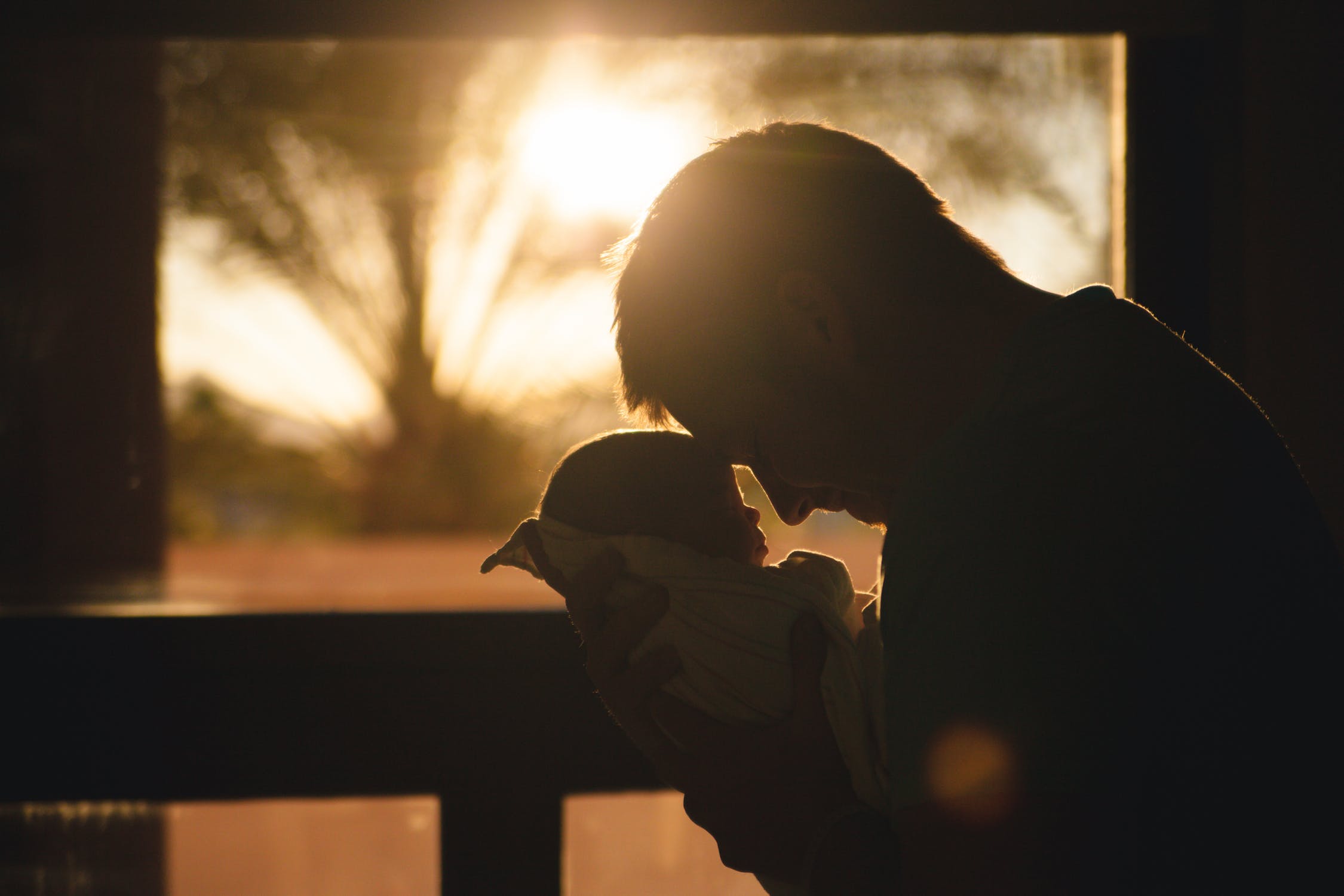Blog
Why We Still Need Autism Awareness: Perspective From Fort Myers Therapists for Children With Autism
Social media newsfeeds everywhere will be suddenly awash today with blue light bulbs and puzzle piece art, marking World Autism Awareness Day (every April 2nd) and the beginning of National Autism Awareness Month. At FOCUS, members of our team have been providing Fort Myers therapy for children with autism (and many other conditions) for more than a decade now.
Occasionally during Autism Awareness Month, we come across questions/hear sentiments like:
- What difference do blue porch lights and profile pic frames make?
- Doesn’t everyone already know about Autism Spectrum Disorder (ASD) at this point? After all, the CDC’s newest estimate that 1 in 59 children/1 in 37 boys are diagnosed in the U.S. now annually.
- Do we really even NEED an Autism Awareness Month anymore?
- Categorized: ABA Therapy, FOCUS News
- Tagged: ABA therapy, autism awareness, autism awareness month, speech therapy
Early Intervention Speech, Occupational, ABA Therapy Preparing Wave of People With Autism for Workforce
As rates of autism diagnoses climb steadily, roughly 500,000 teens with autism are poised to enter the workforce over the next decade, according to advocates at Advancing Futures for Adults with Autism. Yet the majority of those people with autism struggle to land their first job, and 4 in 10 won’t work at all in their 20s. The spectrum is incredibly broad, so each comes to the table with their own strengths and challenges, but there is no question those who receive early intervention ABA therapy, speech and language therapy and occupational therapy fare much better long-term.
Last year, the U.S. Centers for Disease Control and Prevention updated autism prevalence rates by 15 percent to 1 in 59 children. That’s more than double what the rate was in 2000. Part of this has to do with improved awareness, earlier diagnoses and improved treatment models. Research published in the journal Frontiers in Public Health indicated early diagnosis (before 24 months, as early as 12 months) leads to earlier eligibility for intervention services (like ABA therapy), and other evidence-based research has indicated clear indication early intervention is causally related to better prognoses – including success in education and employment.
The AFFA reports that while most adults with autism want to work, fewer than 60 percent can land a job. The Americans With Disabilities Act prohibits employment discrimination on the basis of disability. Yet an adult deprived of early intervention therapies as a child has missed out on a critical development window to address significant challenges associated with everyday function and independence. This isn’t to say it’s ever entirely “too late” to initiate intervention strategies, but our ABA therapy team members know it’s most effective when it starts before age 5 (and the earlier the better).
- Categorized: ABA Therapy, Occupational Therapy, Speech Therapy
- Tagged: ABA therapy, autism workforce, behavior therapy, early intervention, occupational therapy, speech therapy
Identifying, Treating Pediatric Vestibular Dysfunction Involves Occupational, Physical Therapy Collaboration
Once upon a time, vestibular dysfunction in children was thought to be exceptionally rare. Our occupational and physical therapists know, however, that pediatric vestibular disorders, which affect as many as 35 percent of adults, are increasingly being identified earlier than ever. Symptoms include chronic dizziness and imbalance. In children, vestibular system disorders can also cause problems in early development, impacting:
- Ability to maintain an upright position when sitting;
- Delays in crawling and walking;
- Difficulty with steady vision when moving the head (for example when copying words or letters at a chalkboard when seated at a desk);
- Diminished balance and motor function.
Long-term, this can have significant and painful social, educational and economic impacts for kids. Professionals on our FOCUS Fort Myers occupational and physical therapy teams are committed to identifying and addressing these issues early on, promoting the highest possible level of relief and function and ultimately mitigating the worst adverse impacts.
What is the Vestibular System and How Do I Know if My Child’s is Dysfunctional?
Should My Child be Crawling by Now? FOCUS Fort Myers Pediatric Physical Therapists Weigh In
Many parents think of crawling as the simple progression between head up/rolling and standing up/ walking. But as our FOCUS Fort Myers pediatric physical therapists can explain, crawling is in fact a major motor milestone requiring strength, coordination and motor planning. It is the first step toward independent mobility, which in turn will open new worlds and discoveries as well as lead the way to increasingly more complex movement.
Crawling is one of those skills that requires a child to use both their mind and body. The muscles in the arms, shoulders, neck, back and core need to be strong enough to support one’s weight. Vision is also key, as both eyes are needed to focus on a single target. Mentally, a crawling child is working to memorize facts and build navigation skills (“How can I get past the chair and around the coffee table to get to the toy box?”)
Although every child develops at a varying pace, most babies learn to crawl by about 6 and 10 months. Some babies breeze right on past crawling and go straight to pulling up and walking (read more below about our physical therapists’ take on this). So while each baby is different, we do encourage parents to ask their pediatrician or one of our FOCUS Fort Myers pediatric physical therapists if your baby hasn’t shown steady progress in becoming mobile by the time they reach 12 months. It may also be worth asking if early intervention is needed if his or her “crawl” tends to involve dragging one side of the body.
After the NICU: Preemies Excel With Early Intervention Therapy Age 0 to 5
Premature babies (aka “preemies”) born earlier than the 37th week of pregnancy, are more likely to survive today even compared to the 1990s – and they are more likely to have less severe disabilities. That’s according to research published in the British Medical Journal. Globally, about 15 million babies every year are born before the 37th week, placing them at higher risk for conditions like cerebral palsy, delayed language, speech and motor skills. Study authors further concluded preemies who receive early intervention therapy have a much better chance of catching up to their peers.
Preemies are already starting out behind the curve. The earlier a baby is born, the higher the risk of serious illness and disability. The U.S. Centers for Disease Control and Prevention reports preemies who survive those early weeks and months in the NICU (neonatal intensive care unit) may still struggle with breathing trouble, intestinal/digestive problems (including feeding and swallowing) and developmental delays. About half of all children born more than eight weeks early or at a very low birth weight develop problems with language, learning and executive function.
As our FOCUS Fort Myers therapy team can explain, early intervention therapy involves a combination of separate but interrelated services, tailored to meet the specific needs of each child, with the core aim of helping a child develop skills that will allow them to reach their full potential. This generally includes some combination of speech and language therapy, feeding therapy, occupational therapy and physical therapy. Although many preemies benefit from this therapy up to age 5 and sometimes beyond, commitment to therapy now reduces the struggles preemies will face down the road.
- Categorized: ABA Therapy, Occupational Therapy, Physical Therapy, Speech Therapy
- Tagged: early intervention preemies Fort Myers, early intervention therapy preemies, Fort Myers preemies therapy, preemies, premature baby early intervention therapy, premature baby occupational therapy, premature baby physical therapy, premature baby speech therapy, therapy for preemies
Spread The Love: Speech Therapists’ Top Picks for Positive Affirmations for Kids
Our FOCUS Fort Myers speech therapists must admit: We were a little heartbroken upon learning there would be no more Sweethearts Conversation Candy Hearts this Valentine’s Day (MISS U!). In addition to the fact they can be used in a bunch of fun kids’ speech-language therapy exercises, we had a great idea for a special speech therapy line: TALK 2 ME. I LUV SPCH. WORD UP. LETS LINGO. I HEAR U. SLPZROCK. Not to worry, though – our speech therapists have other ways of making you talk…
In the spirit of spreading the love (despite being candy heart-less), our speech therapists are sharing some of our favorite positive affirmations for kids. Positive affirmations are the kind of declarations that go a step beyond praise and shine a light on something that is special and inherent in that child. Instead of simply, “Nice work!” we say, “You are a hard worker!” Instead of, “Good job on that one!” we say, “You are so brave to try new things.” Rather than just, “Cool picture!” we might say, “You have such a creative mind!”
Praise and compliments obviously are great too, but positive affirmation is more specific. It shines a light on something that is both inherent and special to that person. It acknowledges the challenge and validates the effort. Positive affirmation can help a child gain the confidence to keep going – even when it gets hard. Research shows that children who receive regular positive affirmations will believe, internalize and be motivated by it. In speech therapy, we often see them excel farther and faster.
The positive affirmation boost is backed by extensive research. One analysis published in the Annals of Behavioral Medicine found that children with cancer who practiced self-affirmation were overall more optimistic and coped better, achieved goals faster and ultimately had better health outcomes. Another study by psychology professors Carnegie Mellon University found that when people are under pressure, they can actually improve their ability to problem-solve by using positive self-affirmations. And a brain scan study published in the journal Social Cognitive and Affective Neuroscience established that people who practice self affirmation had higher activity levels in areas of the brain associated with reward.
Talking to Kids About Peers With Disabilities: Perspective From Fort Myers Occupational Therapists
As FOCUS Fort Myers occupational therapists, we help children with disabilities overcome impediments to independence, adapt to the world around them (or adapt the world to them) and acquire the tools necessary to navigate each day. One key component of this is learning appropriate socialization – particularly with peers. Through play-based approaches, our clients learn to recognize personal space, read body language, handle greetings, manage unexpected interactions, participate in conversations, take turns, avoid conflicts and understand and express their emotions.
Problems with socialization for children with disabilities can be compounded when peers’ reactions are overwhelmingly negative. To be fair: It’s natural for any child to be curious, hesitant or possibly even scared when encountering notable differences for the first time. Every parent has at least one story about the time their child said something mortifying in pointing out another person’s differences (usually very loudly, in public, and in a line where there is no quick escape). But the truth is: They’re still learning socialization skills too. It’s a teaching moment.
Talking to your kids about peers with disabilities increases understanding and acceptance, encourages inclusion and can even help reduce bullying (to which children with disabilities are especially vulnerable).
Long-practicing occupational therapists in South Florida know it wasn’t so long ago children with disabilities were far more isolated from society in daily life. The 13 percent of Americans with disabilities were often taught in different classrooms, denied accommodations allowing them access to the same facilities and arbitrarily boxed out of many career choices. The good news is that’s changing, most recently with the U.S. Department of Education’s new policy statement on inclusion in early childhood programs. The DOE policy declares unequivocally that inclusion of children with disabilities from a young age offers maximum benefit and should be every district’s goal.
That means if he or she is not already, your child will soon have daily interaction with at least one peer who has a disability. Helping them understand differences – and framing those differences in a positive way – can make a big difference.
“Fort Myers ABA Therapy for Kids with Down Syndrome? I Thought That Was Just for Autism?”
When parents of children with down syndrome are referred to Fort Myers ABA therapy, their initial response is often, “Wait, I thought that was for autism?”
It is. But it’s also proven extremely effective when incorporated into the treatment plans of kids with other special needs – especially down syndrome.
Certain challenging behaviors common among children with down syndrome are very similar to those displayed by children with autism. These behaviors, left untreated, can impede progress with academics, socialization and independence – blocking their path to realizing their full potential.
Good news for Florida parents of children with down syndrome: ABA therapy coverage is mandated for them, this month marking two years since the legislature agreed this, along with early intervention speech therapy, occupational therapy and physical therapy should be guaranteed for children diagnosed with down syndrome.
The Florida mandate – House Bill 221, codified in and amendment to F.S. 627.6686 – helps families and individuals with down syndrome access effective, science-based therapy without having to mount a massive fight with your health insurer.
- Categorized: ABA Therapy
- Tagged: ABA therapy down syndrome, down syndrome, Fort Myers ABA Therapy
No Tall Tales: Bedtime Story Bonuses are Big for Kids With Special Needs
Many of our FOCUS pediatric speech therapists were initially drawn to this field in part because we share a love of language. Sure, some of us are self-professed grammar nerds and logophiles, but in working with kids with special needs, we’ve seen that the real beauty of language is the way it facilitates communication and sparks connections. That’s a universal truth of language, but in helping children overcome speech delays, receptive language deficits or phonological disorders, we’ve come to appreciate language on a whole new level.
In stacking the developmental blocks for communication, social interaction and connection, one of the best (and easiest) things any parent can do: Read bedtime stories. This is especially true for kids with special needs, for whom language doesn’t come easily. Frequent storybook sessions help children learn new words, recognize the importance and subtle differences of tone, inflection and pitch, explore complex feelings and confusing interactions in a safe space and better grasp the intricacies of the world around them.
Most children – even if some have shorter attention spans – love bedtime stories. (Although story time can be anytime, bedtime is ideal – especially if you’re child is antsy – because you’re more likely to have a captive audience just before bed, as opposed to morning or mid-day, unless they still nap. Plus, many parents who work find it difficult to nail down a story time routine in the morning rush or simply can’t swing it on their lunch hour.) Making stories-and-snuggles part of the nightly groove works best for most, gives kids something to look forward to and a chance to wind down. And, as most parents of kids with special needs know, having a routine is a lifeline.
Even if your child doesn’t seem to understand the stories, follow along or pay much attention, research shows they still glean advantages from the one-on-one time, routine and mental exercise. Most speech, ABA and occupational therapists would argue children who struggle with expressive and receptive language skills may even need those bedtime stories more than most.
- Categorized: ABA Therapy, Occupational Therapy, Speech Therapy
- Tagged: ABA therapy, academic growth, applied behavioral analysis, behavior therapy, parent involvement
Tackling Tummy Time: Pediatric Occupational Therapists Talk Tips
“Tummy time” is a cute little phrase referencing an essential infant exercise that our pediatric occupational therapists know so many parents come to dread. Per the American Academy of Pediatrics, tummy time should start when your child is a newborn, placing your child (always supervised) on their tummies. This begins with short, 2-to-3-minute increments three times a day and eventually extending it for longer periods of 30-to-40-minutes as they get older.
The whole concept of “tummy time” started back in the early 1990s, when the AAP first began recommending that babies be put “back to sleep,” placed on their backs during naps and at night to reduce the incidence rate of sudden infant death syndrome (SIDS) – which has really worked! Researchers around the globe report SIDS deaths have decreased 40 to 50 percent since the Back to Sleep campaign began.
The problem is this has been accompanied by a rise in other problems physicians and pediatric occupational therapists believe is related, most commonly plagiocephaly. In layman’s terms, this refers to when infants develop a flat spot on the back of their skull. The American Academy of Physical Therapists reports an “alarming rise” of skull deformation, with one analysis published in the Cleft Palate-Craniofacial Journal finding it rose approximately 600 percent from an incidence rate of 5 percent prior to 1992 (when the “Back to Sleep” campaign began) until now. “Back to Sleep” is almost certainly a driving factor, but also the increasingly inordinate amount of time infants spend in car seats, strollers, etc.










